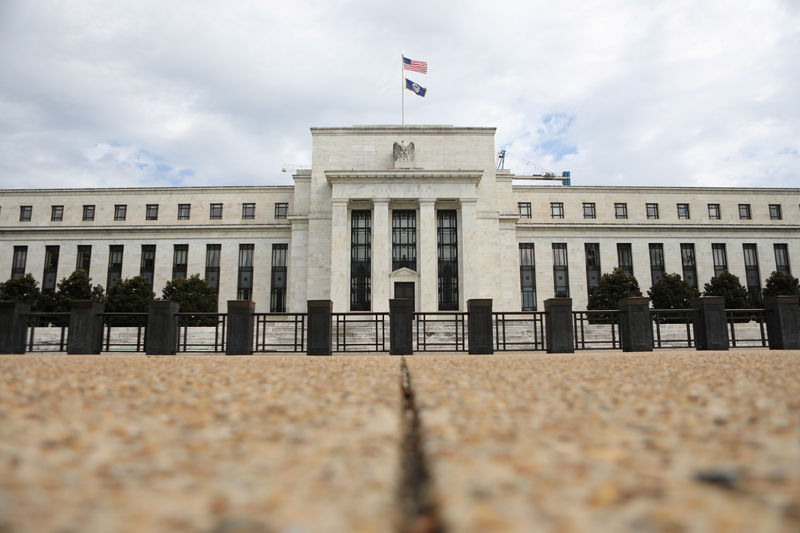Investing.com - The Federal Reserve left interest rates unchanged on Wednesday and said it would stop its balance-sheet reduction program in September amid concerns over slowing growth both domestically and abroad.
The Federal Open Market Committee left its overnight funds rate in a range of 2.25% to 2.5%.
The decision on rates was widely expected as Federal Reserve members, including Chairman Jerome Powell, have repeatedly stressed that a wait-and-see approach was needed to assess the health of the U.S. economy.
But in an unexpected move the Federal Reserve also signaled that no rate hikes would be appropriate for 2019.
Members of the rate-setting committee reduced their 2019 median forecast for interest rates to 2.4% from a previous estimate of 2.9%, hinting at no rate hikes for 2019. That's below the two rate hikes previously indicated in the Fed's December projections. Fed watchers had only expected the Federal Reserve to lower its expectations to a single rate hike for this year.
The interest-rate outlook for both 2020 and 2021 were lowered to 2.6% from 3.1% previously, while the longer-run interest rate was maintained at 2.8%. That has raised investor expectations the central bank may be close to reaching neutral, a level of rates that neither stimulates nor restricts the economy.
On the balance sheet, the Fed said it will begin in May to reduce the amount of proceeds -- received from securities on its balance sheet -- it allows to roll off each month and will halt the program in September.
The Fed has been allowing as much as $50 billion a month of maturing securities to roll off its balance sheet, which peaked at roughly $4.5 trillion in Jan. 2015, but has now narrowed to about $4 trillion.
"The FOMC more than reinforced market expectations of an extended pause, if not possible end, to the tightening cycle," BMO said in a note.
The dovish outlook on monetary policy was attributed to signs of slowing U.S. economic growth even as the labor market remains strong. Fed policymakers cut their outlook on U.S. economic growth for 2019 and beyond.
"Information received since the Federal Open Market Committee met in January indicates that the labor market remains strong but that growth of economic activity has slowed from its solid rate in the fourth quarter," the Fed said in a statement.
The economy is expected to grow by 2.1% in 2019, down from a previous estimate of 2.3%, and by 1.9% in 2020, down from 2% previously, the Fed's Summary of Economic Projections showed.
In the run-up to the Fed decision, some market participants had called on the Fed to consider cutting rates as the central bank's two-pronged mission - to achieve maximum employment and stable inflation - shows signs of vulnerability.
The central bank estimates the pace of inflation, meanwhile, to cool to a rate of 1.8% in 2019, down from a previous estimate of 1.9%. While core-PCE inflation for both 2019 and 2020 is expected to meet the Fed's 2% target.
The unemployment rate for 2019 was raised to 3.7% from 3.5%.
The most recent nonfarm payroll report showed the U.S. economy created just 20,000 jobs in February, though the unemployment rate at 3.8% remains near its lowest level in five decades.
Core PCE, the Fed's preferred measure of inflation, has remained shy of the central bank's 2% target for at least three months.
